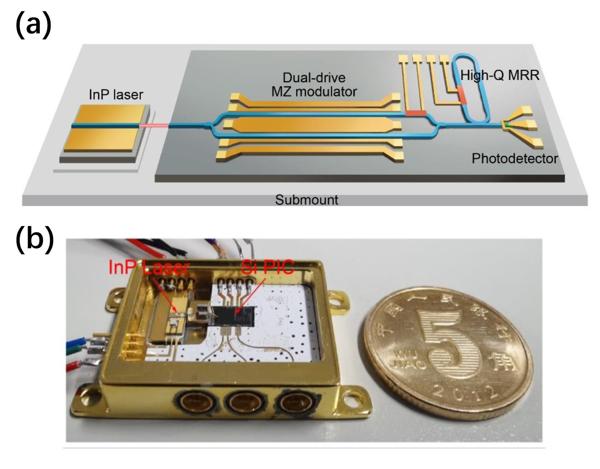Microwave filters represent a class of devices used to select desired band of RF frequencies, which are widely applied in many fields such as radar, electronic warfare, and wireless communication. Compared to traditional electronic microwave filters, microwave photonic filters (MPFs) operate on signals in optical domain, can offer broad frequency range, excellent tunability and strong immunity to electromagnetic interference.
Therefore, MPFs are considered as a promising alternative toward next-generation RF systems, for instance, the 6G wireless network. Original MPFs are implemented based on bulk devices, that are plagued by the limitations in system space, cost, and stability.
These problems impose restrictions on their extensive deployments in practical RF applications. Higher level of photonic integration has been an urgent pursuit for the implementation of MPFs or other microwave photonics functional modules. In recent years, the integration of MPFs onto a chip-scale platform has been driven by advances in nanophotonic fabrication techniques, which is termed "integrated MPFs".
However, most integrated MPFs reported thus far have merely incorporated passive devices on chip, while all necessary active devices (including laser, modulator, and photodetector) are still bulk and discrete. The improvements on system footprint and stability are rather limited. The first all-integrated MPF is realized on a monolithic indium phosphorus (InP) platform. Nevertheless, the achieved filtering performances are unsatisfactory, especially the poor spectral resolution (>2 GHz) caused by the intrinsically large InP waveguide loss.
The research group led by Prof. Xingjun Wang from Peking University reported a high-performance integrated MPF with switchable response, based on the hybrid integration of a silicon photonic (SiP) chip and an InP laser chip, as shown in Fig. 1.

Fig. 1 (a) Schematic diagram of the hybrid-integrated MPF and (b) photograph of the packaged hybrid-integrated MPF
The silicon chip is fabricated by standard SiP process, monolithically integrating a dual-drive Mach-Zehnder modulator, a high-Q ring resonator, and a photodetector. The silicon chip is then hybrid-integrated with a high-power InP distributed feedback (DFB) laser, based on the micro-optics method, to realize an all-integrated MPF. The research results are published in Photonics Research, Volume 9, No. 8, 2021 (Yuansheng Tao, Haowen Shu, Xingjun Wang, Ming Jin, Zihan Tao, Fenghe Yang, Jingbo Shi, Jun Qin. Hybrid-integrated high-performance microwave photonic filter with switchable response[J]. Photonics Research, 2021, 9(8): 08001569).
This MPF exhibits advanced filtering performances, including a wide-frequency tunable range covering the S-band to K-band (3 to 25 GHz), a high spectral resolution as narrow as 360 MHz, and a large rejection ratio of >40 dB, that are superior to previous MPFs in similar integration level. Moreover, the filtering response can be agilely switched between the bandpass and bandstop function with a transient respond time (∼48 μs).
Prof. Wang expressed: "This work leverages the hybrid integration approach to combine the Si platform and InP platform on their own strengths while avoiding their respective weaknesses, therefore makes an all-integrated and high-performance MPF become a reality. Meanwhile, the hybrid integration method is more scalable and cost-effective".
In the future, further optimizations on chip-to-chip coupling loss and RF package are needed, and some important RF link performance metrics such as spurious-free dynamic range (SFDR) and noise figure also should be promoted, to propel the practical employment of integrated MPFs in various fields such as 6G wireless communication, microwave photonics radar, electronic warfare, etc.


